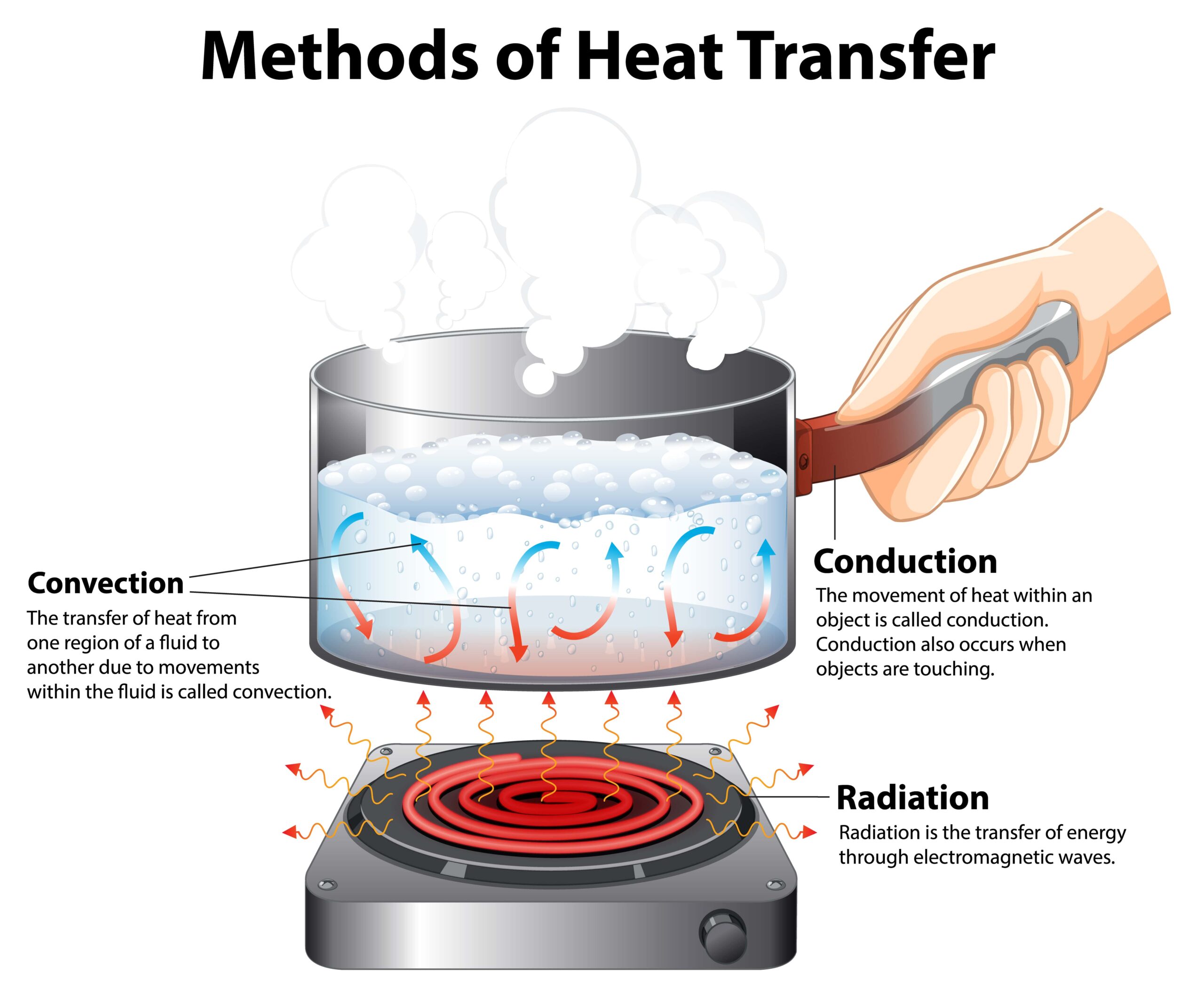Conduction transfers heat through direct contact, while convection involves heat transfer through fluid movement (liquid/gas).
TL;DR Convection Vs. Conduction
Convection occurs when heat is transferred through the movement of fluid or gas. This transfer mechanism relies on the circulation of particles to distribute heat evenly. The heated molecules rise, creating a flow that carries warmth away from its source.
Conduction involves direct contact between objects or substances. Heat travels through solid materials by vibrating atoms or molecules passing their kinetic energy to adjacent particles.
What is convection?
Convection is a mode of heat transfer in which energy is conveyed through the motion of fluids, such as liquids or gases. This transfer occurs due to variations in temperature and density within the fluid.
When a region of the fluid becomes heated, it becomes less dense and rises, while cooler, denser fluid descends to replace it. This cyclical motion establishes a convection current, facilitating the exchange of heat.
Convection plays a crucial role in natural processes like weather patterns, ocean currents, and even the heating of homes through forced air systems.
What is conduction?

Conduction is a method of heat transfer that occurs when there is direct contact between two objects or substances.
Heat energy flows from the hotter object to the colder one until both reach an equilibrium temperature. This process happens in solids, liquids, and gases.
In solids, conduction takes place through vibrations of atoms or molecules, passing on thermal energy from one particle to another. Metals are excellent conductors due to their closely packed lattice structure and free electrons that facilitate the transfer of heat.
In liquids and gases, conduction occurs through collisions between particles. However, this mode of heat transfer is less efficient compared to solids because particles in fluids are more spread out and have weaker intermolecular forces.
Convection Vs. Conduction – Key differences

Conduction
Definition: Conduction is the transfer of heat through direct contact between particles of a substance, such as molecules or atoms. It occurs when there is a temperature difference within an object or between two objects in contact.
Mechanism: In conduction, heat is transferred through the vibration and collision of particles. High-energy particles transfer their energy to neighboring particles with lower energy.
Medium: Conduction can occur in solids, liquids, and gases, but it is most effective in solids because the particles are closely packed and can transfer energy more efficiently.
Example: If you touch a metal spoon that has been in hot water, you’ll feel the heat transferring from the hot end of the spoon to your hand. This is conduction.
Speed of Transfer: Conduction is relatively slow compared to convection and is efficient over short distances.
Convection
Definition: Convection is the transfer of heat through the movement of a fluid (liquid or gas) due to density differences caused by temperature variations. It involves the actual movement of the substance carrying heat.
Mechanism: Convection occurs when warmer portions of a fluid rise and cooler portions sink. This movement sets up a circular pattern called a convection current, which carries heat from one area to another.
Medium: Convection mainly occurs in fluids (liquids and gases) due to their ability to flow and change position.
Example: Boiling water in a pot is a classic example of convection. The hot water near the bottom of the pot rises as it becomes less dense, while cooler water near the surface sinks to replace it.
Speed of Transfer: Convection is faster than conduction and is efficient over longer distances, especially in fluids where the movement of the fluid helps distribute the heat.
Image Credits
Featured Image By – Rebecca Siegel on Flickr
Image 1 By – brgfx on Freepik
Image 2 By – brgfx on Freepik









